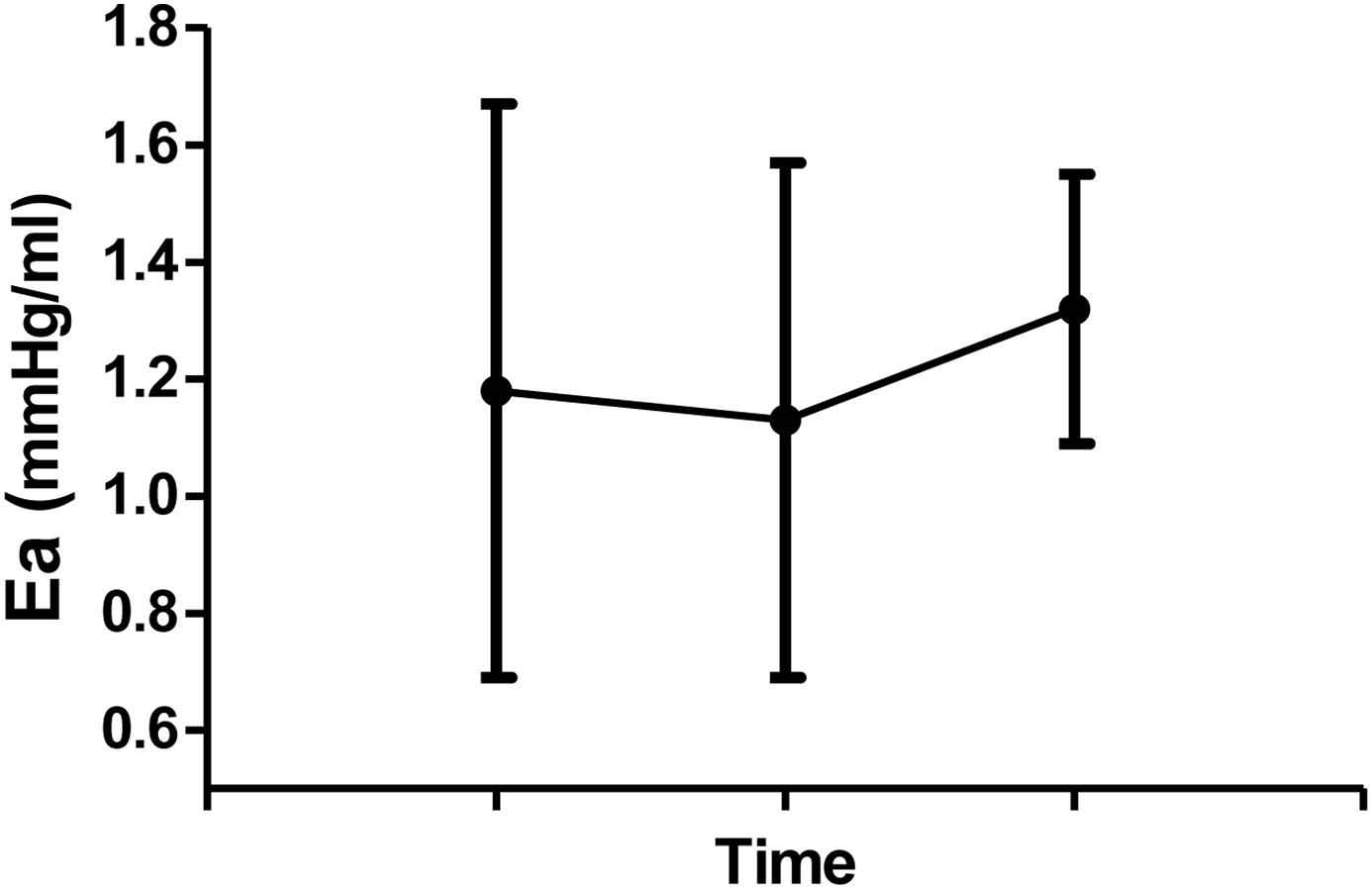P4.43 ACUTE, INDUCED INFLAMMATION AFFECTS ARTERIAL LOAD
- DOI
- 10.1016/j.artres.2012.09.190How to use a DOI?
- Open Access
- This is an open access article distributed under the CC BY-NC license.
Acute, systemic inflammation may contribute to a shift in ventricular-vascular coupling (VVC), quantified by the ratio of arterial load (Ea) to ventricular elastance (Elv). Fitness is associated with reduced systemic inflammation which may affect VVC. We determined the effect of acute systemic inflammation on VVC in young, healthy adults and evaluated the impact of fitness on this outcome. We tested 21 adults (m=15, mean age=25 yr, mean body surface area=2.05m2) before and at 24 and 48 hr post influenza vaccination (inflammatory stimulus). Ventricular volumes were measured by ultrasound from the 4-chamber apical view. Applanation tonometry was used to measure end-systolic pressure (ESP). Arterial load was calculated as ESP/stroke volume (SV) and Elv was calculated as ESP/end-systolic volume (ESV). Treadmill VO2 max was used to quantify fitness. A repeated measures (1 × 3) ANOVA was used with VO2 max as a covariate, and Spearman’s correlation used to assess relationships between variables. Ea increased at 48 hr post-vaccination (from 1.19 to 1.13 to 1.32 mmHg/ml), p<0.05, but Elv did not change at either time point (p>0.05), resulting in an increase in VVC from 0.49 to 0.53 to 0.52, p<0.05, at 24 and 48 hr post vaccination. At 48 hr post-vaccination, the change in Ea was (r=0.45, p<0.05) related to VO2 max. There were no significant changes in blood pressure. Thus, acute inflammation increased arterial load but not ventricular elastance, independent of changes in blood pressure. This increased VVC, and higher fitness was associated with greater inflammation induced changes in arterial load.

Ea (mmHg/ml) at baseline and at 24 and 48 hr post-inflammation. * indicates p<0.05 from baseline value
Cite this article
TY - JOUR AU - A.D. Lane AU - R.M. Kappus AU - K. Bunsawat AU - S. Phillips AU - R. Motl AU - J.A. Woods AU - T. Baynard AU - B. Fernhall PY - 2012 DA - 2012/11/17 TI - P4.43 ACUTE, INDUCED INFLAMMATION AFFECTS ARTERIAL LOAD JO - Artery Research SP - 195 EP - 195 VL - 6 IS - 4 SN - 1876-4401 UR - https://doi.org/10.1016/j.artres.2012.09.190 DO - 10.1016/j.artres.2012.09.190 ID - Lane2012 ER -
